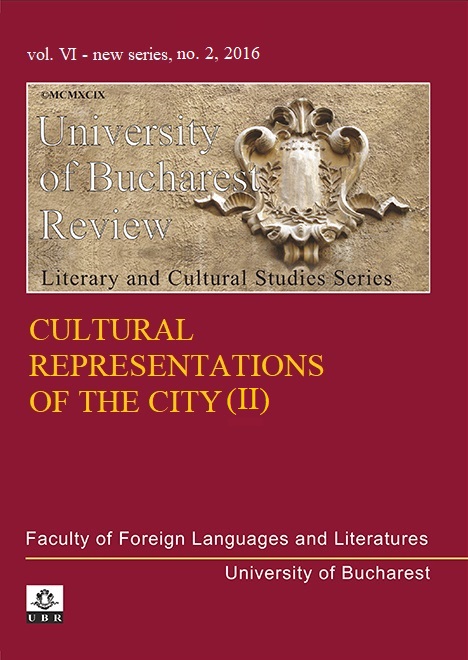THE ODYSSEY OF CHARLES BUKOWSKI
THROUGH THE CITY MAZE
THE ODYSSEY OF CHARLES BUKOWSKI
THROUGH THE CITY MAZE
Author(s): Andreea SmedescuSubject(s): Cultural history
Published by: Editura Universităţii din Bucureşti
Keywords: maze; city; space; time; society; symbol;myth;
Summary/Abstract: The article sets out to analyse the process of mythologizing the city environment. Charles Bukowski reorganizes space and time according to his own perspective. The urban landscape stretches chaotically in a maze of streets and buildings which are symbols of the modern civilization; whereas time passes slowly, following the same rhythm of an automatic existence. The poet feels entrapped by society and the only way to escape is to set out on an archetypal journey through the urban landscape. The main objective of the article is to explore the paradigms of urban reality and the phenomenological concepts of modern city within the scope of individual self-knowledge. The urban topos is a psychological awareness of one's individuality, and Bukowski ventures into a symbolic Homeric odyssey, enlivening the urban myths through metaphorical analogies. In Northrop Frye's Anatomy of Criticism (1957), the symbol is perceived as a literary unity that is both a motif, and a sign. In Bukowski's poems, the city is both a social image, but also the archetype of Babel like world of technology, and split personalities. The methodology of the article is based upon the Fourfold Method (promoted by Dante who claimed that a literary text can be analysed on four levels: empirical, social, psychological, and spiritual), and psychoanalytic criticism. Therefore, the urban environment becomes a mental construction, and a literary representation of a person's inner, and outer self). Moreover, the article discusses the mythic image of urban life (the city is a symbol of one's affiliation to a certain community, and civilization), and the aesthetic trajectory of city life (Mihai Drăgănescu in tiință i Civilizație outlines that civilization means an aesthetic inner drive that reminds a person of his ontological condition). The psychoanalytic criticism imbues both the individual and collective consciousness with an allegorical meaning of life (Charles Mauron outlines that the soul of a writer can be revealed through the metaphors of his inner projection). For Bukowski, the city maze becomes the symbol of a technological world filled with chaos and order, sanctuary and dark recesses, and swarming with people.
Journal: University of Bucharest Review. Literary and Cultural Studies Series
- Issue Year: VI/2016
- Issue No: 2
- Page Range: 56-74
- Page Count: 19
- Language: English

